Source🤜🏽:Beijing Olympic City Development Association2024-06-23
To mark the 77th International Olympic Day on 23 June, the themed exhibition on how the Olympic Winter Games Beijing 2022 drove the coordinated development of the Beijing-Tianjin-Hebei Region opened at the National Ski Jumping Centre in Zhangjiakou. The opening ceremony was attended by Fu Xiaohui, Secretary of the Party Leadership Group and Director of the Beijing Olympic City Development Centre; Li Keliang, Deputy Party Secretary and Mayor of Zhangjiakou; Ji Chuanpai, member of the Party Leadership Group and Deputy Director of the Beijing Olympic City Development Centre; Liu Haifeng, Deputy Mayor of Zhangjiakou; Guo Zhiwei, Vice Chairman of the Zhangjiakou Municipal Committee of the Chinese People’s Political Consultative Conference and Director of the Zhangjiakou Municipal Sports Bureau; Cao Dongxiao, Deputy Party Secretary and District Mayor of Chongli District of Zhangjiakou; and Li Sheng, Party Secretary and Chairman of Zhangjiakou Xingyuan Investment and Development Group Co., Ltd.
(Group photo at the opening ceremony of the exhibition)
In his speech, Ji Chuanpai said that the exhibition aims to spread the Olympic spirit, raise public awareness of the Olympic culture and the Olympic Movement and promote the legacy of the Olympic Winter Games Beijing 2022 (Beijing 2022 Games) as well as the innovative, concerted post-Games practices of Beijing and Zhangjiakou in driving regional coordinated development. Over the past year, Beijing and Zhangjiakou have achieved fruitful results in jointly advancing the coordinated development of sports, culture and tourism industries in accordance with the Annual Plan for Advancing the Development of the Beijing-Zhangjiakou Sport, Culture and Tourism Belt. This exhibition not only showcases the outcomes of cooperation between the two sides, but also marks a new start for the two sides to move forward. We will work closely together to make full use of the Winter Olympic legacy, further deepen and enhance regional synergy and write a new chapter in the coordinated development of the Beijing-Tianjin-Hebei Region.
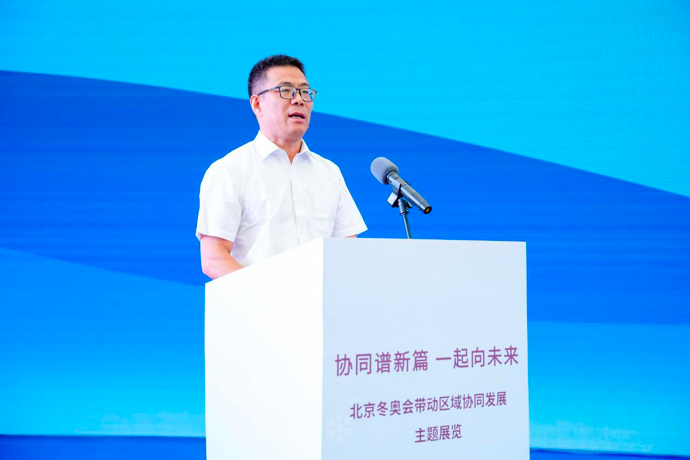
(Ji Chuanpai gives a speech)
Noting that the Beijing-Tianjin-Hebei coordinated development is a major national strategy, Liu Haifeng stated that during the preparation for and staging of the Beijing 2022 Games, Beijing and Zhangjiakou together accomplished their work in such fields as transport, healthcare, environmental protection, culture, tourism and sports, opening a new chapter for the Beijing-Tianjin-Hebei coordinated development. Since the signing of the Annual Plan for Advancing the Development of the Beijing-Zhangjiakou Sport, Culture and Tourism Belt, the two cities have accelerated the coordinated development of their sports, culture and tourism industries. This exhibition is another practice in honour of the Plan. In the future, Beijing and Zhangjiakou will work together to make full use of the Winter Olympic legacy, strengthen regional synergy, and deliver more cooperation results in the coordinated development of sports, culture and tourism industries, so as to inject more vitality into the coordinated development of the Beijing-Tianjin-Hebei Region.

(Liu Haifeng gives a speech)
At the opening ceremony, Guo Lina released the Plan for Hosting Sporting Events in Winter Olympic Venues in the Second Half of 2024, and introduced the post-Games development of the winter tourism industry in Zhangjiakou, the hosting of sporting events and resident sports teams in Winter Olympic venues and the events and activities scheduled for the second half of 2024.
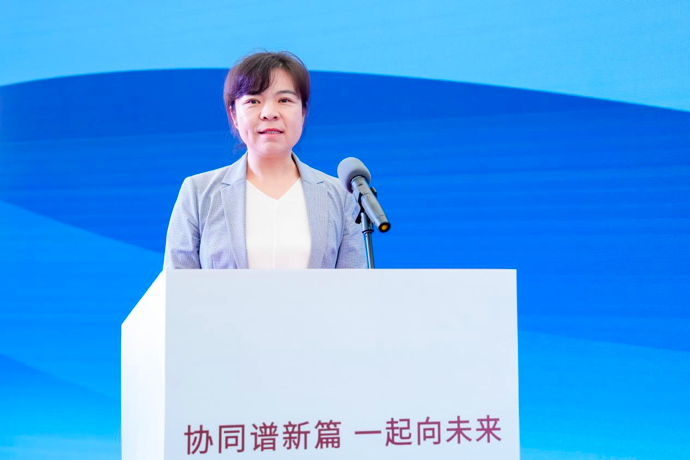
(Guo Lina gives a speech)
Li Sheng introduced the overall business scene of the Winter Olympic venues in Zhangjiakou Olympic Park, including the National Ski Jumping Centre, the National Biathlon Centre, the National Cross-Country Skiing Centre, the Zhangjiakou Olympic Village, Metropark Hotel Xueruyi & KEW Green Hotel Xueruyi, the Xueruyi Ski Resort and other projects under construction.
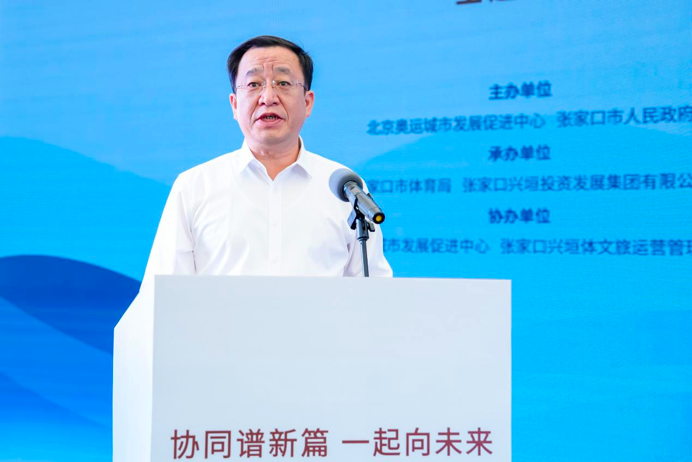
(Li Sheng gives a speech)
According to the organiser, this exhibition, with the theme of “Write a New Chapter Together: Towards a Shared Future”, comprehensively demonstrates the legacy outcomes of the Beijing 2022 Games in driving regional development, covering such aspects as transport infrastructure connectivity, joint pollution prevention and control, complementary and mutually-reinforcing development of industries, collaborative delivery and sharing of public services, the development of the Beijing-Zhangjiakou Sports, Culture and Tourism Belt and post-Games venue utilisation. It also shows the innovative concerted efforts taken by stakeholders in the post-Games period to continuously promote the integrated development of sports, culture and tourism industries in the region. The exhibition, located at the Peak Club of the National Ski Jumping Centre, features pictures, text, videos, physical objects, interactive experience equipment and more, and will last for three months.
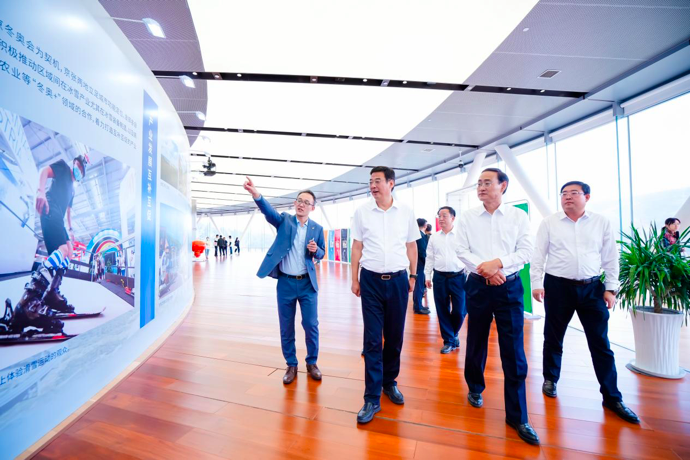
(Fu Xiaohui and Li Keliang visit the exhibition)
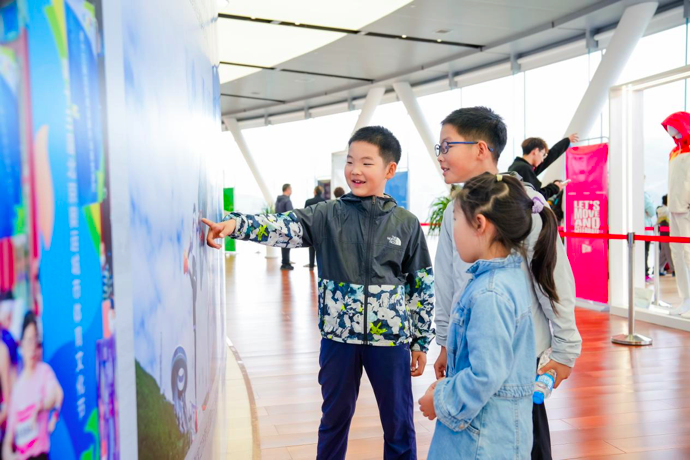
(Children visit the exhibition)

(Visitors try the interactive device)
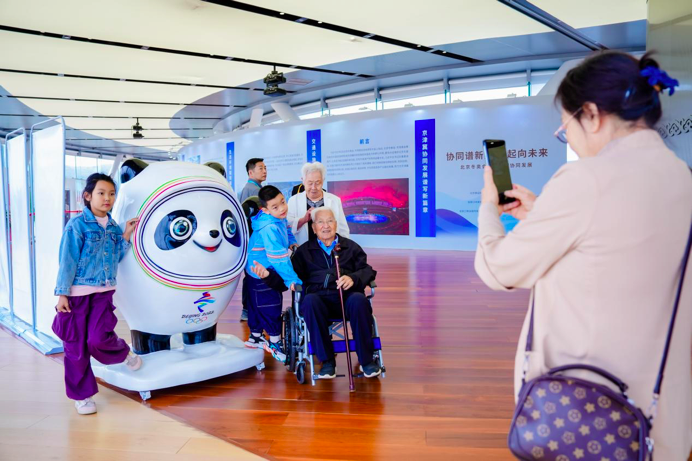
(Visitors take a family photo at the exhibition)

(Visitors at the exhibition)
It is learned that the Annual Plan for Advancing the Development of Beijing-Zhangjiakou Sports, Culture and Tourism Belt was signed by the Beijing Olympic City Development Centre, the Beijing Municipal Bureau of Culture and Tourism, the Beijing Municipal Bureau of Sports and the Zhangjiakou Municipal People’s Government in August 2023. Since then, the two cities have established a coordination and support mechanism for the inheritance of the Olympic legacy based on the sustainable cooperation mechanism between the Olympic city development institutions, so that the two cities can share resources and draw on each other’s strengths for common development. They have jointly held the themed exhibition on the Beijing 2022 spirit (Zhangjiakou) and the Beijing-Zhangjiakou cultural and tourist resources survey trip, among other events. Cross-country running and other activities were also held to mark the Olympic Day and other key dates to promote the post-Games use of Olympic venues and disseminate the Olympic culture. International exchanges and cooperation have also been strengthened. Zhangjiakou has successfully joined the World Union of Olympic Cities, and Zhangjiakou Chongli Olympic Park’s application for the right to continue using its current name has been approved. All this has enhanced Zhangjiakou’s international influence and ability to protect and develop Olympic intellectual property rights. Beijing and Zhangjiakou have also jointly organised mass sport events to promote fitness for all. The “Joyful Road of the Winter Olympics” self-service track was developed for the Beijing Olympic City Sports and Culture Festival. Teqball, an emerging sport in the world, was promoted in Zhangjiakou. The two cities are working together to cultivate cross-regional sports and tourism brands and sporting events. They are also working with the Beijing Olympic Museum to promote the Olympic culture. For example, a study tour to the Museum and an Olympic winter camp for teenagers from the two cities were organised. To promote the development of the winter sports industry, they jointly held the “Snow China” Alpine Skiing Points Race and doubled down on marketing to enhance the brand influence.
Taking the Beijing 2022 Games as a driving force for regional coordinated development, Beijing and Zhangjiakou made remarkable progress in transport, healthcare, environmental protection, culture, tourism and sports, among other fields. Zhangjiakou opened its first high-speed railway, and its railway mileage has so far exceeded 1,000 kilometres, bringing the city into Beijing’s one-hour transport circle. Beijing and Zhangjiakou signed three rounds of the Beijing-Hebei-Zhangjiakou Framework Agreement on Collaborative Development of Healthcare. The partner departments of municipal hospitals have received a total of 1,853,000 outpatient visits and 273,000 inpatient admissions. The two cities have collaborated and shared information regularly in water conservation, afforestation and pest prevention and control and completed 20 million mu (1,333,333.33 ha) of greening and afforestation and 1,589,700 mu (105,980 ha) of grassland restoration and treatment. In 2023, Zhangjiakou received 89,011,000 tourists and posted tourism income of RMB104.907 billion, a year-on-year increase of 190.06% and 316.73%, respectively. Of the tourists from outside Zhangjiakou, more than 80% were from Beijing. Beijing and Zhangjiakou jointly held more than 20 cross-country running, cycling, skiing and other kinds of sporting events, including a dozen brand-name events such as Hood to Coast China and the Chongli 168 Ultra Trail. They co-hosted 93 events at various levels, including the FIS Alpine Snowboard Asian Cup, and won the bid to host the 2029 FIS Snowboard, Freestyle and Freeski World Championships. There are 137 events scheduled for the second half of 2024 in an effort to create new scenarioses for year-around use of Winter Olympic venues.

© Copyright 2020. All rights reserved
Beijing Olympic City Development Association.All rights reserved.Beijing ICP 13521520 No.